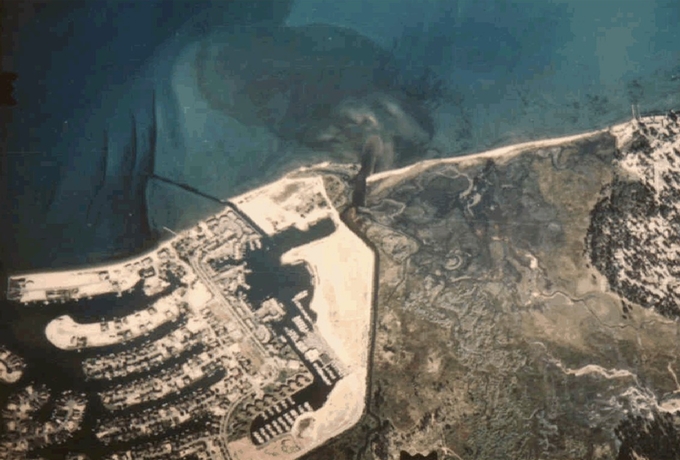Protecting the lake, benefiting the community

The Upper Truckee Marsh, as seen in the 1950s, would have have been developed today. Photos/League to Save Lake Tahoe
Publisher’s note: This is one in a series of stories Lake Tahoe News will be running leading up to the 50th anniversary of South Lake Tahoe on Nov. 30.
As the city of South Lake Tahoe turns 50 this year, I have been contemplating the League to Save Lake Tahoe’s relationship with the city. As many people are aware, we have not always had the strongest partnership.
To understand the legacy between the city and the League, we should consider the environmental challenges we inherited as our organizations grew during the 1960s. Unbridled development without any urban planning had already begun to impact the lake. The Tahoe Keys had destroyed hundreds of acres of valuable wetland. The region lacked any long-term vision. By the 1990s, however, the idea of redevelopment gave hope for revitalization on the South Shore. The League, the city and other interested parties ironed out a plan for Tahoe’s first redevelopment project, the Heavenly Village. The League worked to get as many old motels torn down as possible, and sought to gain as much wetland and shoreline restoration as possible from the project. The Heavenly Village now serves as a model for redevelopment around the lake.
Finding a redevelopment model to help Tahoe’s communities revitalize while also benefitting the lake is a bright spot from the past 50 years. In reflecting on my three-year tenure as the League’s executive director, I also found many positive points.
For example, the Tourist Core Area Plan passed in 2013 with relatively little controversy. We supported it after the city addressed our concerns on new zoning identified in the draft plan. Also in 2013, we were thrilled when the city passed a landmark plastic bag ban, the first community at the lake to do so. The ban will substantially reduce the amount of plastic waste in our streams and lake. And this past year, the League was very pleased to see the commercial service option dropped from the Airport Master Plan process. This will help keep airport noise in check, to the benefit of wildlife and community members, as well as eliminate any need to expand the airport’s footprint. The city is also making step-by-step progress toward achieving pollution-reduction targets set by the TMDL, an EPA program to reduce sediment flowing into the lake.
These encouraging examples remind us that we can protect the lake while also benefitting the community.
Next up, the League will be keeping a close watch on the Tahoe Valley Area Plan and the Loop Road project to ensure they maximize benefits for the lake. The League supports the Tahoe Valley Area Plan, which will be brought forward for adoption within the next few months, for its open space and environmental benefits.

In the 1960s when the Tahoe Keys was built environmental concerns were not a major concern for most people.
The second phase of the TMDL will be more challenging, and the city will have to identify several new water quality improvement projects to meet pollution reduction requirements. We are also encouraging the city to improve public transportation and winter road sanding operations, a huge source of sediment flowing into the lake. As the city moves forward with more redevelopment, we’re hoping to see the city create targets for coverage reduction and restoration on sensitive lands. We are committed to productive dialogue with city staff and policy makers to identify solutions to these current challenges.
The League’s purpose has always been to act as a strong watchdog for the lake. However, we can’t Keep Tahoe Blue without community involvement. I was born and raised in South Lake Tahoe and care deeply about its future. Since coming on board, I’ve built a robust community engagement program because I believe the more residents gain hands-on experience tackling the lake’s environmental challenges, the more they’ll understand what solutions are needed and stand up for them.
For example, in addition to our two new volunteer programs, Eyes on the Lake and Pipe Keepers, which call on community members to help with scientific monitoring, we are now partnering with Lake Tahoe Unified School District to develop a Tahoe-based environmental curriculum. Students will use the lake itself as a laboratory to study geography, biology, public policy and other subjects.
The environmental movement is evolving, and finding more productive ways of achieving results. We are encouraged that the city is also growing and responding more to the concerns of its citizens.
Environmental progress is slow without true partnerships. With the League, the city and the community working together, we can achieve so much, for much less money and in a quicker, more efficient way. We wish the city a very happy 50th anniversary and look forward to collaborating to improve our environment and benefit our community.
Darcie Goodman Collins is a native of South Lake Tahoe and serves as executive director for the League to Save Lake Tahoe.
